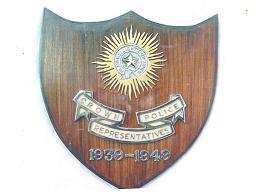
The Central Reserve Police Force, initially established as the Crown Representatives Police on July 27, 1939, assumed its current name when the CRPF Act was passed on December 28, 1949, marking 84 years of glorious history. The force has since evolved into a substantial and diverse organization with a Directorate, four Zonal Headquarters, 21 Administrative Sectors, 2 Operational Sectors, 39 Administrative Ranges, 17 Operational Ranges, 43 Group Centres, 22 Training Institutions, 4 Composite Hospitals (with 100-bed facilities), 18 Composite Hospitals (with 50-bed capacities), 6 Field Hospitals, 3 Central Weapon Stores (CWS), 7 Ammunition Workshops (AWS), 202 General Duty Battalions (GD Bns), 6 VIP Security Battalions, 6 Mahila Battalions, 15 Rapid Action Force (RAF) Battalions, 10 CoBRA Battalions, 5 Signal Battalions, 1 Parliament Duty Group (PDG), and 1 Special Duty Group (SDG).
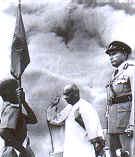
The CRPF is a force with a nationwide presence, exemplifying its composition and deployment across India. Its remarkable ability to swiftly adjust to diverse situational demands, while seamlessly collaborating with state police, has earned the CRPF the reputation of being one of the most widely embraced forces, both by the public and state administrations, over the years.
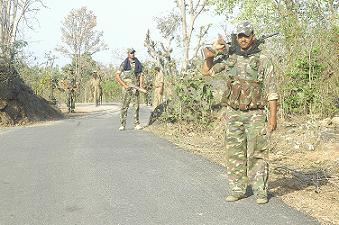
Broad gamut of duties performed by the CRPF are :
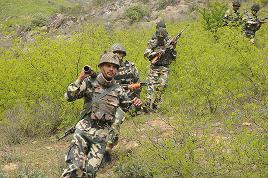
In addition to its responsibilities in maintaining law and order and countering insurgency, the CRPF has played a crucial role in the conduct of General Elections over the past few years. This significance is particularly pronounced in the strife-ridden regions of Jammu and Kashmir, Bihar, and the North-eastern states. During both Parliamentary and State Assembly elections, the CRPF has been instrumental in ensuring robust security arrangements.
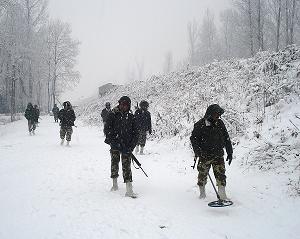
The CRPF plays a crucial but often overlooked role in safeguarding critical Central Government facilities, including airports, power plants, bridges, Doordarshan Kendras, All India Radio Stations, the residences of Governors and Chief Ministers, nationalized banks, and various other government establishments in states affected by insurgency. In these severely troubled regions, the CRPF diligently ensures the security of democratic institutions and prevents militant groups from usurping civil society. Despite its relatively inconspicuous nature, the CRPF's contribution remains of utmost importance.
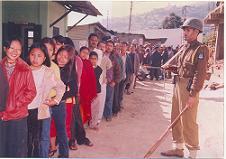
A total of 5.68% of the CRPF's personnel are deployed for the security of VIPs, primarily concentrated in the North-Eastern States, Jammu and Kashmir, Bihar, and Andhra Pradesh. This includes the protection of Governors, Chief Ministers, Ministers, Members of Parliament (MPs), and Members of State Legislative Assemblies (MLAs) in Jammu and Kashmir, Assam, Arunachal Pradesh, Manipur, Nagaland, Tripura, and Mizoram. Furthermore, the CRPF provides static guard services for the residences and offices of the Prime Minister of India, various Union Ministers, and other dignitaries.
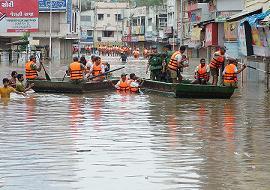
Approximately 8.5% of the force is deputed for the protection of important Central and State Government facilities, especially in regions affected by insurgency. This duty involves ensuring the security of crucial sites like government secretariats, Doordarshan Kendras, telephone exchanges, banks, hydroelectric projects, and Jails. Additionally, the CRPF is charged with the responsibility of safeguarding the Parliament House.
A total of 16 Coys are assigned to provide security for three highly sensitive shrines: Krishna Janma Bhoomi, Shahi Idgah Masjid complex in Mathura, and the Ram Janma Bhoomi-Barbi Masjid complex in Ayodhya. The CRPF also deploys 6 companies to ensure the security of the Mata Vaishno Devi Shrine in Katra, Jammu, within the Union Territory of Jammu and Kashmir.
The Central Reserve Police Force (CRPF) stands as India's largest Central Armed Police Force, bearing a proud history and an eventful present. Its chronicles are filled with numerous "SAGAS OF BRAVERY" that serve as enduring sources of inspiration and guidance. Since its establishment in 1939, the CRPF has traversed a remarkable journey, from aiding in the integration of small Princely States into the Indian Union to managing the tumultuous events of the Partition Riots.
Today, it finds itself engaged in a full-scale guerrilla war within Maoist-affected regions. Over the years, the CRPF has valiantly battled in conjunction with the Indian Army during times of war. Notably, on October 21, 1959, ten courageous CRPF soldiers laid down their lives when Chinese troops intruded into Indian territory, attacking a CRPF patrol at Hot Springs in Ladakh.
Further, during a pivotal moment in history, two CRPF companies stationed at Sardar Post in Kutch successfully repelled an assault by a brigade of the Pakistan Army on April 9, 1965. The Battle of Sardar Post remains a testament to the valor of the CRPF and is regarded as one of the most exceptional battles fought by police forces. On the domestic security front, the CRPF thwarted an attack on the Indian Parliament on December 13, 2001, and another on Ayodhya on July 27, 2005.
The CRPF has also played a pivotal role in quelling militancy in Punjab during the 1980s and insurgency in Tripura throughout the 1990s. In 2001, following a recommendation by a group of Ministers, the CRPF was designated as the primary internal security force in the country. Today, more than one-third of the force is stationed in areas affected by left-wing extremism, with the mission to control this form of insurgency.
The CRPF has made significant contributions to eradicating Naxalism, particularly in West Bengal and in the Kaimur and Rohtas regions of Bihar. The force successfully flushed out Naxals from the Saranda forest area in Jharkhand, which had served as a major stronghold for them. Despite its dispersed deployments, the CRPF achieved the neutralization of the top Maoist leader Kishanji in 2011 and conducted major operations in so-called liberated Naxal areas like Saranda in 2011, Maad in 2012, the Cut-off area in 2012, Burha Pahad in 2012, and Silger & Pedia in 2013.
The CRPF has been actively involved in rescue and relief operations during various natural disasters, including the Orissa Super Cyclone in 1999, the Gujarat Earthquake in 2001, the Tsunami in 2004, and the Jammu and Kashmir Earthquake in 2005. Furthermore, the CRPF has demonstrated its capabilities in various overseas UN deployments, including missions in Sri Lanka (1987), Haiti (1995), Kosovo (2000), and Liberia (Women Contingent) in 2007.
To date, 2255 brave CRPF soldiers have made the supreme sacrifice of their lives in the service of the nation. In recognition of their operational valor, the force has been honored with 01 George Cross, 03 King's Police Medals for Gallantry, 01 Ashok Chakra, 10 Kirti Chakra, 01 Vir Chakra, 39 Shaurya Chakras, 1 Padma Shree, 49 Police Medals for Gallantry, 202 Police Medals for Meritorious Service, 2027 Police Medals for Gallantry, 5 Indian Police Medals for Gallantry, 4 Vishist Seva Medals, 1 Yudh Seva Medal, 5 Sena Medals, 114 Prime Minister's Police Medals for Life Saving, and 2 Jeevan Raksha Padaks.
In last five years CRPF has neutralized 809 militants/naxals, apprehended 7239, forced the surrender of 3748, recovered 3093 arms, 97076 number of assorted ammunitions, 2945.712 kgs of explosives, 1689 grenades, 679bombs, 17 rockets, 5790 IEDs, 65365 detonators, 20325 gelating sticks, 132157 kgs of narcotics and over 41 crores of cash